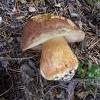Who was Saint Préjet ?
Préjet is the translation of Projectus, famous bishop of the VIIeme century.
The Projectus’s mother had, before the birth of her son, a premonitory dream in which she delivered a child covered with blood, vision that foretold the martyrdom according to the people.
When he was a student in the Benedictine monastery of Saint Austremoine, the bishop, surprised by his numerous virtues, all of modesty, chastity and charity, ordered him deacon and charged him of the care of the church of Issoire. That is certainly toward this time that he realized his first miracle: a worker was buried under wall and everybody believed him death. Saint Préjet got in prayer and ordered to withdraw him from underside the ruins: he was found safe, without a scrape. Thanks to this action join to his virtues, he became priest and further when the seat became vacant, the people and the clergy of Auvergne cheered him in an unanimous voice and he became bishop. Although, he thought that he was unworthy, he was consecrated bishop of Clermont in 665.
Then, Saint Préjet signalled himself by new prodigies: the historians mention the recovery of a paralytic of 15 years, of an epileptic and many other patients.
Victim of jealousies, the honorable prelate has undergone a conspiracy close to Volvic, organized by Hector, count of Marseille. Accompanied by two religious, he was cruelly murdered. Whereas one of the religious was taken by mistake for the bishop and was killed the first, Saint Préjet states his identity to these executioners. Then , the chief oh the troop, threw him a stroke of sword through the chest. “Lord, said the saint, don’t impute to them this sin because they don’t know what they are making! “and, as he finished these words, he received on his head another stroke that opened his skull. The martyrdom that had been predicted him was accomplished thus. It happened on the January 25th in 674. His devotion spread very quickly, not only in Auvergne but also in the south, the East and the Of the Lyonnais ( City of Saint Priest for example). The relics of Préjet the saint are always in the church of Volvic where they are venerated.
Saint Préjet during the Prehistory – the signs on hoop :
Eight engravings representing a hoop have been recovered on the village of Saint Préjet d’allier. They are positioned to a few hundreds of meters the one of the other. The site is favourable because it is dominant but also because close to the water.
These engravings would have been drawn at the end of the Neolithic or in the beginning of the age of bronze (toward -2300 to -1800 before J.C) and represent the goddess of life and the death venerated to this time. Other decorated rocks with this same signs in hoop may be seen on the townships of Ailhon and Creysseilles in Ardèche, and of Branoux in Gard.
The roman time :
In the hamlet of Veyrines, in the fields, we note the traces of several buildings and notably from a villa with atrium and gallery of facade (length at least 22 meters) and with maybe a hypocauste. A Roman village existed there. The villa, building in quarry stones of granite, is oriented according to the cardinal points. Among the furniture, have been recovered coins, an oil lamp, a ring made of bronze, ceramics, a tank in volcanic rock and bricks of paving and covering. In the neighboring fields have been recovered a polite axe and coins (a Vespasien or Titus, a domitien, two Trajans, three Hadriens, two Antonins the devout, one of Faustine mother, two Marc-Aurèle, a Lucilla, a Convenient, a Stern Alexander and three unidentifiable).
Du moyen-âge au XXéme siècle:
The church:
It’s an old church given by the bishop of Mende in 1145 in favour with the abbey of la Chaise Dieu.
The priest was
called by the abbey, he collected part of the tithe. This little church has been modified several times. The abse and the aisle are roman and seemed to be from the XIII’s century.
In the past, it was vaulted in cradle which curves of roof structure were marked by the cornice The little windows of the apse had been enlarged. The current archway in ribbed vault is apparently from the end of the XV’s century or from the beginning of the XVI’s. The main door, oriented to the south showed the character of the work of XV’s or XVII’s century. The steeple which rises upon the west side has been
rebuilt in the end of the XIX’s century. The church has been totally renovated in 1991 and 1992.
The castle:
If we consider a spirit’s point of view, the center of the parish was Saint-Préjet, the seigneurial authority was in Verdun. So, it was in Verdun that the lord made the justice by the bailiff (judge). In 1294, a man called Gérald is bailiff of Verdun and we found notaries act written in the castle of Verdun in the XIII’s century. At this period, Saint Préjet didn’t seem to be a very important village around the church and the priory was, in fact, the Verdun-Saint Préjet land.
The school:
According to the huge number of priest who came from the parish or surrounding area in the XVI’s and XVII’s century, we can suppose that a permanent school with a vocation for the priesthood existed in Saint Préjet. Later, when a seminary has been created, the teaching has been completed.
Moreover, besides this post, the priests were also preoccupied by the young poor girl’s instruction. From 1733, a free school was put in place under the authority of Claude gailhard, Saint Préjet’s priest. In one
of the flat of the presbytery, Marie Garrel, Verreyroles priest’s’sister taught free to the young girl of the parish during some years, until the Claude Garrel’s death. Then, she kept doing this activity in a house bought by Vital Galhard, the Claude’s spiritual heir and successor at the presbytery, until her death. This free school, certified by the bishop, received donations which allow to keep on until the Revolution.
Because of a prefectural decree, the 20th June of 1824, the charitable organisation of Saint Préjet, under mandate of the mayor, Joseph Séjalon, became owner of the possession which came from the free school. The next year, in 1825, the town council reached an agreement with the Saint Joseph’s sisters: By exchange of the buildings’ ownership, they had to lead the free instruction of the young girls.Following a town council deliberation, the 12th august 1896, in 1899 the town broke off the arrangement by policy way.
After a judgement, the 19th may 1900 the town became owner of the buildings and allocate them
for the nondenominational school, the 25th august of 1900.
At the same time, three other town schools were building: La Bastide’ school which worked during 80 years, the Chambonnet’s school which closed in 1950 and the Mazel’s school, created in 1907 and closed in 1984 because of shortage of people.
In the XIX’s century, since an indeterminate date, Saint Préjet had also a boy school, in a council house (now private residence) in the north west of the town, near the Verdun stream. In this place, between 1850
and 1900, Mister Roustide was in charge of a 60 or 80 student’s form according to the period of the year. The teacher had to be well organized because the children were between 7 and….20 years!
In 1900, this school was grouped together with the buildings which belonged to the sisters.
When the school wasclosed in 1900, some people react strongly. Thanks to their generosity and their work, they built a new building between 1901 and 1903 where the sisters kept teaching to the young girls in two
primary forms. The most of the children were originally from the parish. Beside, a boarding school was also created for the student who came from nearby parish or town far from the school. This school closed in 1954 when the sisters left Saint Préjet. A part of the building was sold to a private and the other part to the council for social accommodation.
The school in the centre of the town was closed in 2003 because of the lack of pupils.
Le XXeme siècle:
The World War First and Two
37 persons died during the first world war and 2 people during the second.
The story of narcissus, moss, blueberries and other mushrooms:
The narcissus has a large importance in the story of Saint Préjet d’Allier.
During the spring, dozens of tonnes of narcissus collected by the inhabitants were sent to Grasse, in perfume factories. For 3 weeks, a district of the town was turned into a valley decorated with flowers.This flower was very coveted by perfume industry. That’s why, Saint Préjet, became one the main supplier of the Grasse distilleries.
At nightfall, employees (mainly women), were arriving at the bottom of the town.
Handling of narcissus as well as his transport requires a good delicacy. When the truck was arriving, the flowers were unloaded, weight and displayed on the ground in the warehouse, or in the street. The flower picked up during the day was cooled down thanks to the coldness of the night in order to avoid that they rotted and lost his precious perfume. Men tossed flowers with pitchfork so they could down more rapidly.
Just after, women did again the bundles, delicately without packing down flowers. Then these ones were loaded int he trucks which for the Côte d’Azur. Narcissus had to arrive in the distillery not more than 24 hours after being picked. Then in the factory, narcissus became perfume.
The moss (lichen in reality) was collected in bags picker of the region. It was put in bunch, pressed and delivered to perfume factory of the Côte d’Azur.
As for the blueberries, they were collected in crate, then sorted and at last put in punnet for commercialisation.
These three activities disappeared. Just remains today mushroom collection for Italy.
The hydroelectrique production:
2 hydroelectric dams were built in Saint Préjet. The dam of Pouzas, at the confluence of l’Ance and la Virlange was constructed from 1921. A canal with a siphon bridge feed the hydroelectric factory of
Monistrol d’Allier. The dam of La Valette, built in 1938 and 1939, constitute a water reserve for l’Ance du Sud.
Does and stags:
From the beginning of September to mid October, stags, rejoin does to form a harem.
During this rutting season, males don’t feed and don’t rest. They can lost up to 20 % of their weigh (about 40 kg)! Deers have been introduced with success in the area where they they have disappeared
during the end of the XIX’s century. Currently, the population present in l’Allier exceeds a hundred animals.
Saint Préjet and his mayors from the Revolution:
|
Augustin CHARLES Pierre DUPIN Antoine DUFFAUT Augustin CHARLES Joseph SEJALON Jean-Baptiste LAROCHE Jean-Antoine VERNET Jean-Claude LAURENT Théodore LAURENT Jean COUFORT Théodore LAURENT Jean COUFORT Jacques BRAJON François VERNET Théodore LAURENT Cyprien CHARRADE Théodore LAURENT Eugène BRAJON Pierre COUFORT André GORY Auguste FEMINIER Baptiste ALBEPART Louis FOUGEROUSE Robert CHARBONNEL Jean-Claude MOREL |
1792-1795 1795-1796 1796-1797 1797-1808 1808-1832 1832-1835 1835-1840 1840-1858 1858-1871 1871-1874 1874-1876 1876-1880 1880-1881 1881-1884 1884-1892 1892-1904 1904-1920 1920-1932 1932-1944 1944-1945 1945-1964 1964-1965 1965-2004 2004-2008 2008- |
 Vitrail dans l’église représentant Saint Préjet
Vitrail dans l’église représentant Saint Préjet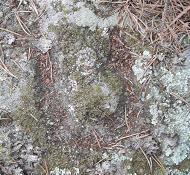
Signe en arceau
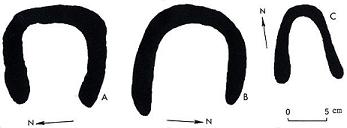
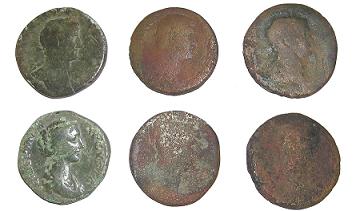 Monnaie romaine retrouvée au lieu-dit Veyrines
Monnaie romaine retrouvée au lieu-dit Veyrines
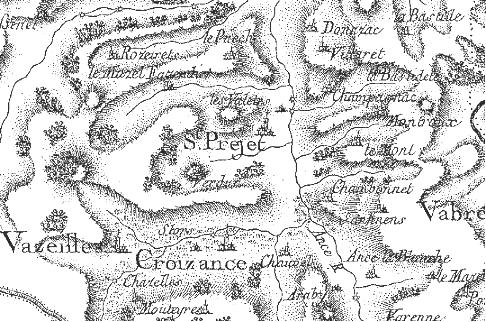 Le bourg de Saint-Préjet-d’Allier référencé sur la carte de Cassini
Le bourg de Saint-Préjet-d’Allier référencé sur la carte de Cassini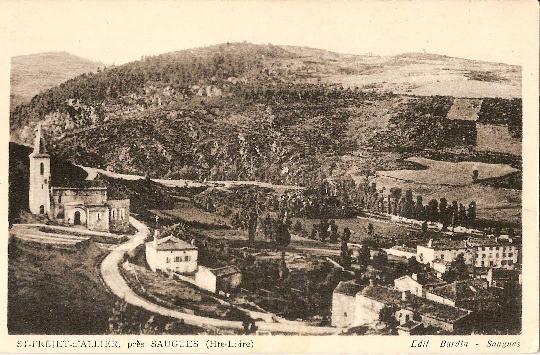 Le bourg de Saint-Préjet-d’Allier au début du XXème siècle
Le bourg de Saint-Préjet-d’Allier au début du XXème siècle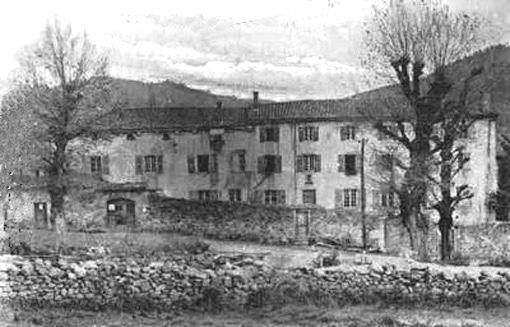
Ecole du bourg de Saint-Préjet d’Allier au début du XXème siècle
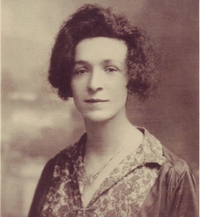
Emma Roussel



